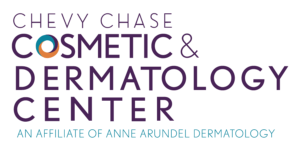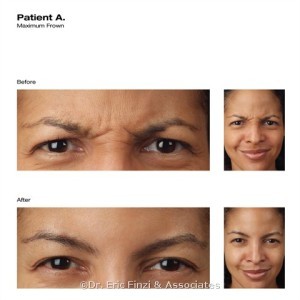While BOTOX® Cosmetic (onabotulinumtoxinA) has become a household name, BOTOX® was the first botulinum toxin type A treatment to be approved by the U.S. Food and Drug Administration as an orphan drug for two rare, eye muscle disorders. This journey, which started in 1989, began with the approval of BOTOX® to treat strabismus (a misalignment of the eyes, commonly known as crossed eyes) and blepharospasm (uncontrolled blinking of the eyelid). Strabismus affects nearly four in every 100 adults,1 and blepharospasm affects an estimated 20,000 to 50,000 people in the United States, with 2,000 new cases diagnosed annually.2 Since that time, BOTOX®therapeutic has been approved for other significant medical conditions including Cervical Dystonia, Severe Underarm Sweating when topical agents don’t work sufficiently, Upper Limb Spasticity, Chronic Migraine, Overactive Bladder when an anticholinergic doesn’t work or the side effects are intolerable, and urinary incontinence due to overactive bladder caused by a neurologic condition when an anticholinergic doesn't work or the side effects are intolerable. Chevy Chase Cosmetic Center's president and medical director, Dr. Eric Finzi, is the leading researcher in studying the use of botulinum toxin for the treatment of depression. For more information, visit BotoxForDepression.com.
“BOTOX® is an innovative product whose potential to treat medical conditions across a variety of therapeutic categories continues to expand even today,” said David E.I. Pyott, Chairman of the Board and Chief Executive Officer, Allergan. “The more we research the medical value of this treatment, the more we learn about this biologic and the areas of clinical unmet need where it may provide some benefit. Since BOTOX® was first approved 25 years ago, the list of indications it treats has grown exponentially – not just in the United States, but globally. Today, physicians in 88 countries treat 27 different conditions with BOTOX® and the possibilities continue to grow with Allergan’s research.”3
The video, which outlines the 25-year history of development for BOTOX®therapeutic, features first-hand accounts from patients who chronicle their journey from diagnosis to treatment, as well as physicians who share their personal experiences in advancing the development of this brand, showcasing its therapeutic roots.
For each person that views the video, Allergan will support four patient advocacy organizations that are partnering with the company to help raise awareness, educate and support people living with any of the medical conditions currently being treated with BOTOX®. Support will be given to:
- Benign Essential Blepharospasm Research Foundation (BEBRF)
- Dystonia Medical Research Foundation (DMRF)
- National Headache Foundation (NHF)
- National Association for Continence (NAFC)
“The history of BOTOX® therapeutic is really a remarkable story of how a substance from nature has been successfully harnessed for medical benefit,” said Scott Whitcup, M.D., Allergan’s Executive Vice President, Research and Development and Chief Scientific Officer, “It’s also a human interest story that starts with the scientists and the physicians who observed the impact of BOTOX® in treating certain medical conditions, tracked that impact and did something about it. Without this pioneering spirit, we would not have been able to pursue the clinical development and FDA approval of many of the therapeutic indications we now have for BOTOX®.”
To learn more about BOTOX® and to view the 25th anniversary video please visit www.BOTOX.com.
About BOTOX® (onabotulinumtoxinA)
BOTOX® is a prescription-only medical product that contains tiny amounts of a highly purified botulinum toxin protein refined from the bacterium, Clostridium botulinum. When injected at doses approved by the U.S. Food and Drug Administration (FDA) into a specific muscle or gland, BOTOX® neurotoxin is expected to produce a safe, as well as effective result, usually lasting up to approximately three to ten months, depending on the approved indication and on the individual patient.
BOTOX® was first approved in 1989 by the U.S. Food and Drug Administration (FDA) for the treatment of two eye muscle disorders, making it the first botulinum toxin type A product to be approved in the world. Since then, BOTOX® has been recognized by regulatory authorities as an effective treatment for 27 different indications in approximately 88 countries, benefiting patients worldwide.
Botox's Other Medical Indications
Today, BOTOX® neurotoxin is approved to treat a total of eight medical conditions in the United States, including:
- the treatment of overactive bladder symptoms such as a strong need to urinate with leaking or wetting accidents (urge urinary incontinence), a strong need to urinate right away (urgency), and urinating often (frequency) in adults 18 years and older when another type of medicine (anticholinergic) does not work well enough or cannot be taken;
- the treatment of leakage of urine (incontinence) in adults 18 years and older with overactive bladder due to neurologic disease who still have leakage or cannot tolerate the side effects after trying an anticholinergic medication;
- the prevention of headaches in adults with chronic migraine who have 15 or more days each month with headache lasting four or more hours each day in people 18 years or older;
- the treatment of increased muscle stiffness in elbow, wrist, and finger muscles in people 18 years and older with upper limb spasticity;
- the treatment of the abnormal head position and neck pain that happens with cervical dystonia (CD) in people 16 years and older;
- the treatment of certain types of eye muscle problems (strabismus) in people 12 years and older;
- the treatment of abnormal spasm of the eyelids (blepharospasm) in people 12 years and older; and
- the treatment of symptoms of severe underarm sweating (severe primary axillary hyperhidrosis) when medicines used on the skin (topical) do not work well enough in people 18 years and older.
Please see full Indications and Important Limitations below
In addition to the BOTOX® therapeutic uses, BOTOX® Cosmetic with dosing specific for aesthetic patients has been approved by the FDA. BOTOX®Cosmetic is injected into muscles and used to temporarily improve the look of moderate to severe frown lines between the eyebrows (glabellar lines) and moderate to severe crow’s feet lines in adults.
Over the past 23 years, approximately 47 million vials of BOTOX® and BOTOX® Cosmetic have been distributed worldwide (1990-2013).4 In addition, the safety and efficacy of BOTOX® have been well-established in approximately 78 randomized, placebo-controlled clinical trials and in approximately 17,000 patients treated with BOTOX® and BOTOX® Cosmetic in Allergan’s clinical trials.5 With approximately 2,800 articles on BOTOX® and BOTOX® Cosmetic published in scientific and medical journals,6 BOTOX®neurotoxin is one of the most widely researched medicines in the world.
*Source: Allergan



Follow Us